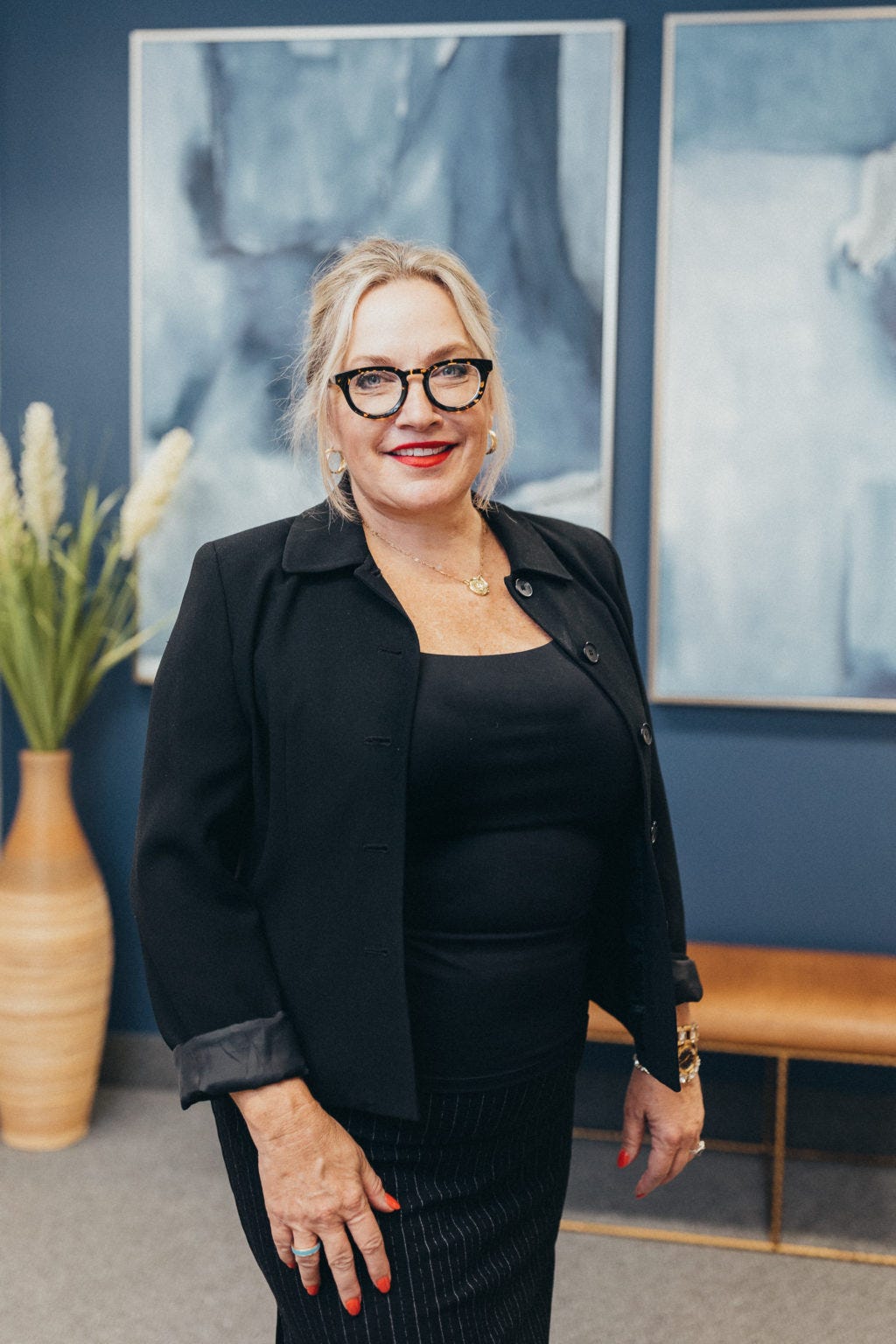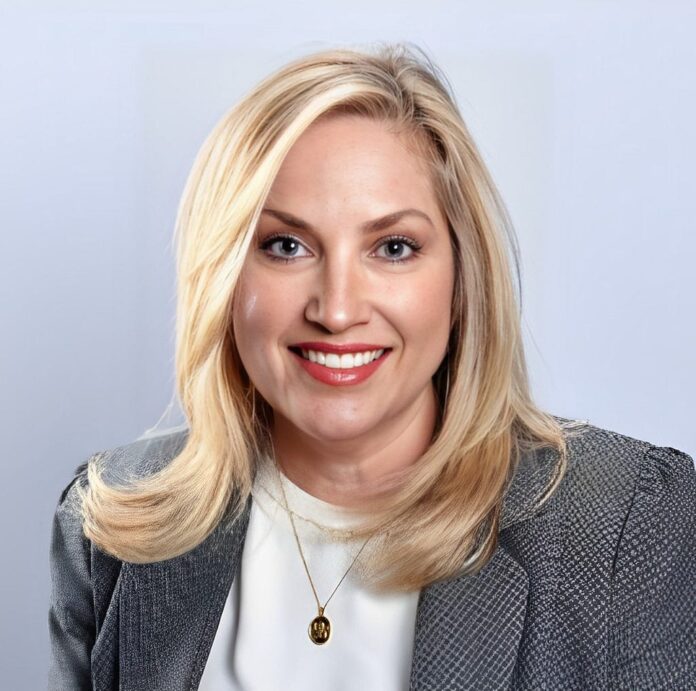Workplace Conflict Resolution: Celeste Robertson Of The Law Offices of Celeste Robertson On How Team Leaders Can Create The Right Environment To Resolve Conflicts
An Interview With Eric Pines
Neutral Mediation: Sometimes, a third-party perspective helps. We’ve brought in external facilitators for unbiased viewpoints.
An important component of leadership is conflict resolution. Why is conflict resolution so important? How can leaders effectively incorporate conflict resolution into their work culture? In this interview series called “Workplace Conflict Resolution: How Team Leaders Can Create The Right Environment To Resolve Conflicts,” we are talking to business leaders who can share insights and anecdotes from their experience about how to implement Conflict Resolution at work. As part of this series, we had the pleasure of interviewing Celeste Robertson.
Celeste Robertson graduated with honors from the University of Houston Law Center in 1994 after receiving her Bachelor’s degree, with honors, in Political Science. She has spent her career helping individuals through trying times with unmatched dedication and integrity.
A member of the highly esteemed Texas Bar foundation, Celeste is committed to local, statewide, & national civic and charitable organizations.
Thank you so much for joining us in this interview series. Before we dive into our discussion, our readers would love to “get to know you” a bit better. Can you share with us the backstory about what brought you to your specific career path?
Growing up I was a huge bookworm and I was deeply influenced by stories and the importance of family legacy. I was always interested in how families could navigate the complexities of inheritance, guardianships, and legal issues. The political landscape also fascinated me, which led me to a Political Science degree and later, law. I wanted to assist people in protecting their family’s legacy and ensuring their wishes are honored.
Can you share the most interesting story that happened to you since you started your career?
One of my most poignant cases involved a divided family disputing the will of their patriarch. With weeks of mediation, we not only reached an agreement but also witnessed the family reconcile and find closure. It underscored the fact that at the heart of many legal battles, there’s a human story waiting to be told and resolved.
Can you please give us your favorite “Life Lesson Quote”? Do you have a story about how that was relevant in your life?
“Justice cannot be for one side alone but must be for both.” — Eleanor Roosevelt. Early in my career, I had a case where I was so vested in my client’s cause that I almost overlooked the broader perspective. This quote serves as a reminder to seek fairness, not just victory.
What do you think makes your company stand out? Can you share a story?
Our firm believes in holistic resolution. While many see probate or family law as simply legal issues, we treat them as personal ones. Once, we even arranged for family therapy sessions along with legal mediation to ensure a family was truly healing.
You are a successful business leader. Which three character traits do you think were most instrumental to your success? Can you please share a story or example for each?
Empathy: Recognizing the emotional stakes helps me better serve my clients. A grieving widow once approached us, uncertain about her late husband’s estate. Our empathetic approach helped her not only legally but emotionally as well.
Determination: The legal world can be challenging. My resolve to fight for my clients’ rights has seen us through many challenging cases.
Integrity: I always believe in doing what’s right over what’s easy. It has earned the trust of our clients and respect from our peers.
Leadership often entails making difficult decisions or hard choices between two apparently good paths. Can you share a story about a hard decision or choice you had to make as a leader?
Once, I had to choose between representing a high-paying client and a pro bono case I felt strongly about. I chose the latter, which came at a short-term financial cost but reinforced our firm’s values.
Ok, thank you for that. Let’s now jump to the primary focus of our interview. Let’s start with a basic definition so that all of us are on the same page. What does Conflict Resolution mean?
It’s the process of finding a peaceful solution to a disagreement or dispute, where both parties feel heard and a mutual understanding is achieved.
What are some common misunderstandings about Conflict Resolution that are important to clear up?
Many believe it’s about compromise where each party loses a little. In reality, it’s about collaboration, finding solutions that respect all viewpoints.
This might be intuitive to you, but it will be helpful to clearly express this. Can you please explain why it is so important for leaders to learn and deploy conflict resolution techniques?
Leaders set the tone. When leaders are equipped to handle disagreements maturely and productively, it creates a harmonious work environment and fosters mutual respect.
On the flip side, what happens to a work culture when there is not an effective way of resolving conflict? How does it impact employees?
Without it, teams can become fractured, morale dips, and productivity suffers. Long-standing resentments can fester, leading to a toxic environment.
Can you provide examples of how effective conflict resolution has led to increased team performance, collaboration, or innovation within your organization?
In our firm, when two associates had differing views on a case approach, we facilitated a brainstorming session. This led to a hybrid strategy that won the case and strengthened our team collaboration.

Ok super. Here is the main question of our interview. What are your “Five Ways Every Team Leader Can Create The Right Environment To Resolve Conflicts”? If you can, please share specific examples of a workplace conflict you’ve encountered, and how you applied conflict resolution techniques to address it.
1 . Open Communication: Encourage teams to voice concerns without fear. Example: We have monthly “open floor” meetings.
2 . Empathy Training: Understand the importance of perspective-taking. We once had role-reversal exercises that were eye-opening.
3 . Clear Expectations: Set boundaries and roles. In our firm, clarity reduced overstepping and misunderstandings.
4 . Neutral Mediation: Sometimes, a third-party perspective helps. We’ve brought in external facilitators for unbiased viewpoints.
5 . Feedback Culture: Regularly ask for and provide constructive feedback. This proactive approach nips issues in the bud.
In your experience, what are the most common sources of conflict within a team, and how do you proactively address these potential issues before they escalate?
Differing values, unclear roles, and personal grievances. We hold alignment workshops and clarity sessions to preemptively tackle these.
You are a person of great influence. If you could start a movement that would bring the most amount of good to the most amount of people, what would that be? You never know what your idea can trigger. 🙂
“Empathy in Law.” Too often, the legal world is seen as cold and unfeeling. A movement to integrate empathy in every legal process would revolutionize the industry.
How can our readers further follow you online?
You can follow our firm’s social media pages (Law Offices of Celeste Robertson LLC), or visit our blog on our official website for more insights and updates. (CelesteRobertson.com)
Thank you for the time you spent sharing these fantastic insights. We wish you only continued success in your great work!
About the Interviewer: Eric L. Pines is a nationally recognized federal employment lawyer, mediator, and attorney business coach. He represents federal employees and acts as in-house counsel for over fifty thousand federal employees through his work as a federal employee labor union representative. A formal federal employee himself, Mr. Pines began his federal employment law career as in-house counsel for AFGE Local 1923 which is in Social Security Administration’s headquarters and is the largest federal union local in the world. He presently serves as AFGE 1923’s Chief Counsel as well as in-house counsel for all FEMA bargaining unit employees and numerous Department of Defense and Veteran Affairs unions.
While he and his firm specialize in representing federal employees from all federal agencies and in reference to virtually all federal employee matters, his firm has placed special attention on representing Veteran Affairs doctors and nurses hired under the authority of Title. He and his firm have a particular passion in representing disabled federal employees with their requests for medical and religious reasonable accommodations when those accommodations are warranted under the Rehabilitation Act of 1973 (ADA). He also represents them with their requests for Federal Employee Disability Retirement (OPM) when an accommodation would not be possible.
Mr. Pines has also served as a mediator for numerous federal agencies including serving a year as the Library of Congress’ in-house EEO Mediator. He has also served as an expert witness in federal court for federal employee matters. He has also worked as an EEO technical writer drafting hundreds of Final Agency Decisions for the federal sector.
Mr. Pines’ firm is headquartered in Houston, Texas and has offices in Baltimore, Maryland and Atlanta, Georgia. His first passion is his wife and five children. He plays classical and rock guitar and enjoys playing ice hockey, running, and biking. Please visit his websites at www.pinesfederal.com and www.toughinjurylawyers.com. He can also be reached at [email protected].
Workplace Conflict Resolution: Celeste Robertson Of The Law Offices of Celeste Robertson On How… was originally published in Authority Magazine on Medium, where people are continuing the conversation by highlighting and responding to this story.


